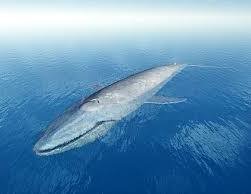Table of Contents
The Massive Size of Blue Whales Amazing physiological facts.
Blue whales, the largest animals known to have ever existed on Earth, exhibit remarkable size that sets them apart from all other creatures. Typically, an adult blue whale can reach lengths of up to 100 feet (about 30 meters) and can weigh as much as 200 tons or more. This immense size is striking not only in comparison to terrestrial animals but also in relation to other marine species. For instance, the blue whale is significantly larger than the largest land animal, the African elephant, which averages between 10 to 13 feet (3 to 4 meters) in height and weighs around 6 tons.
The sheer physical dimensions of blue whales fundamentally influence their physiology. Their massive skeletal structure is uniquely adapted to support such weight while allowing for agile movement through the water. Their bodies are streamlined, reducing drag and enabling them to efficiently navigate vast ocean expanses in search of food. Remarkably, blue whales possess a heart weighing approximately 400 pounds (180 kilograms), comparable to the size of a small car, and its rhythmic pumping is essential for sustaining the whale’s enormous body.Amazing physiological facts.
Behaviorally, the size of blue whales plays a crucial role in their interaction with the marine environment. Filter-feeders by nature, they consume up to 4 tons (3,600 kilograms) of krill daily during feeding season, utilizing their massive mouths to engulf large volumes of water rich in prey. Their size also offers some protection against predators, though they remain vulnerable during their early life stages. Together, these physiological facts illustrate not only the dominance of the blue whale in the oceanic ecosystem but also how their incredible size shapes their lifestyle, feeding habits, and overall survival strategies.Amazing physiological facts.
The Heart of a Blue Whale

The blue whale, the largest animal on Earth, possesses a heart that is nothing short of extraordinary. Often regarded as the largest heart in the animal kingdom, it can weigh approximately 400 pounds (about 180 kilograms) and is roughly the size of a small car. This remarkable organ is vital for supporting the whale’s immense size, allowing it to thrive in its marine environment. The physiology of a blue whale’s heart is uniquely adapted to accommodate its sheer mass, enabling it to pump blood efficiently throughout its vast body.Amazing physiological facts.
The heart of a blue whale is structured to handle the demands of high blood volume and low blood pressure, which is essential for such a large organism. This circulatory system has evolved to ensure that oxygenated blood reaches every part of the whale’s body, from its sprawling flippers to its sizeable tail fluke. Notably, blue whales have the ability to conserve energy by minimizing their heart rate. When at rest, their heart can beat as slowly as 2 to 8 beats per minute. This ability to lower their heart rate is crucial during long dives, allowing them to conserve oxygen while exploring the depths of the ocean.Amazing physiological facts.
Blue Whale Communication: The Songs of the Giants
The communication capabilities of blue whales are nothing short of remarkable, often likened to the songs of the giants. Utilizing low-frequency sounds, these massive creatures create vocalizations that can travel vast distances across the ocean. Blue whale communication plays a crucial role in social interactions, mating rituals, and navigation, making it an essential aspect of their physiology and behavior.Amazing physiological facts.
Blue whale vocalizations range in frequency from 10 to 40 Hz, which can be detected by other whales over hundreds of kilometers. This ability allows them to communicate effectively in the vast underwater environment, where visual cues are often limited. These deep, resonant calls are not only used for social contact but also serve to locate other whales, ensuring that they can find mates or establish connections with their kin.
Research has shown that blue whale songs are not static; rather, they exhibit changes over time. This evolution in vocalization patterns can be attributed to various factors, including shifts in population dynamics, environmental changes, and even the influence of human activity. Studies indicate that contemporary blue whale songs often have different characteristics compared to historical recordings, suggesting an adaptation to their surroundings as well as the pressures they face due to anthropogenic noise.Amazing physiological facts.
Vocalizations are particularly significant during mating season when blue whales use their songs to attract potential mates. The intricate nature of these calls highlights the sophisticated social structure of the species. Furthermore, it appears that like human music, whale songs can vary in complexity, with variations in pitch and rhythm serving specific functions within the species’ social interactions. Understanding the songs of the giants gives us deeper insights into their behavior and the ecological importance of these magnificent marine mammals. In conclusion, blue whale communication through their incredible songs showcases yet another amazing physiological fact about these gentle giants.
Feeding Mechanisms and Dietary Habits
The blue whale, the largest animal on the planet, possesses extraordinary feeding mechanisms that enable it to consume enormous quantities of food to meet its energy requirements. These marine mammals primarily feed on small shrimp-like creatures known as krill. During feeding, blue whales employ a unique filter-feeding technique using their baleen plates. Instead of teeth, these whales have long, comb-like structures made of keratin, allowing them to sieve food from the water. When a blue whale augments its intake, it can engulf large volumes of water, which can exceed 90 tons in a single mouthful, and then expel the excess water, trapping krill in the process.Amazing physiological facts.
The baleen plates play a crucial role in this feeding method. They act as filters, allowing the whale to retain the krill and other small organisms while letting the water pass back out of the mouth. This efficient mechanism enables the blue whale to capitalize on vast schools of krill during feeding seasons. In terms of dietary habits, blue whales primarily consume krill, with an adult whale needing to eat about 4 tons of this small crustacean daily during feeding periods. This substantial dietary requirement reflects their immense size and the energy needed to sustain their massive bodies.
Seasonal changes significantly influence the availability of krill, which affects the feeding patterns of blue whales. Typically, they migrate to high-latitude feeding grounds during summer months, where krill populations are more abundant due to nutrient-rich waters. In winter, blue whales usually migrate to warmer waters for breeding and resting, thus limiting their feeding. These seasonal shifts highlight the relationship between blue whale feeding habits and environmental factors, underscoring the whale’s remarkable adaptations to harness the energy necessary for survival in a dynamic marine ecosystem.Amazing physiological facts.



Post Comment